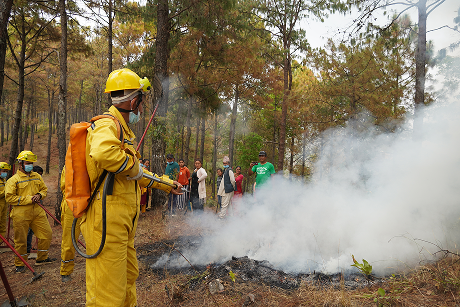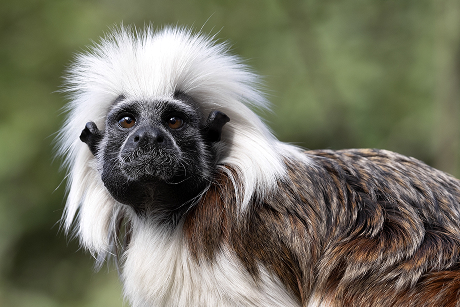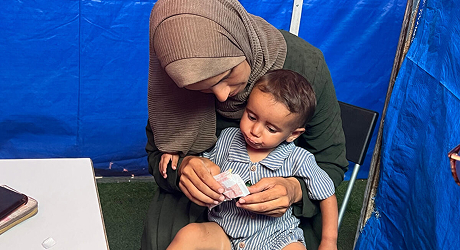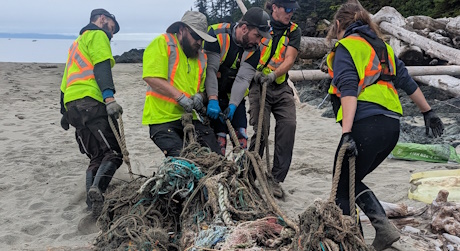Footprints Project
Since 2005, travelers like you have helped us change the world through micro-donations.
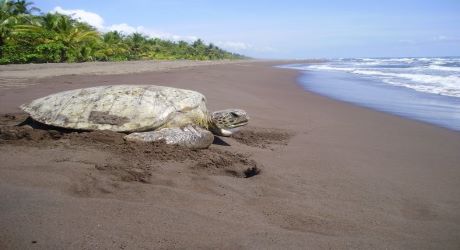
-
A total of
5053
Travelers
-
donated
$30009.49
(100% funded) -
to help improve
Environment
-
impacting
20
people -
in
Costa Rica
This project was carried out during the green turtle nesting season in Tortuguero, Costa Rica. Financial support from World Nomads and the Footprints Network provided essential resources to carry out a program with the following primary goals:
- Goal #1: Monitor the green turtle nesting population at Tortuguero and begin to investigate the potential cause of the decline in green turtle nesting.
- Goal #2: Train aspiring Latin American biologists in order to expand conservation capacity in the region.
- Goal # 3: Reduce human impacts on Tortuguero’s sea turtles and the coastal and marine environments critical to the survival of these species.
- Goal # 4: Conduct diverse community education and outreach programs focusing on sea turtle and habitat stewardship.
RESULTS: Goal #1
During this reporting period, STC conducted a rigorous green turtle research and monitoring program at the Tortuguero nesting beach. During the 2022 green turtle nesting season, surveys documented 60,325 green turtle nests laid on Tortuguero Beach. Although STC observed higher green turtle nesting activity in 2022 than in 2021, the green turtle nesting population continues to exhibit a decline.
For the first time, STC satellite-tagged six green turtles that nested along the southern end of Tortuguero Beach to learn if their migration patterns differed from those nesting along the northern end of the beach. All six of the turtles headed north, which greatly surprised us, with two going to Nicaragua, two going to Belize, and the last two going to Mexico (one on the Caribbean coast and the other on the Gulf of Mexico coast). These are all locations where we have previously tracked green turtles from the northern five miles of Tortuguero Beach.
Although this is the first year that STC has collected this data (with a small sample size), STC has some initial hypotheses on what pressures may be affecting the Tortuguero green turtle population. While the illegal hunting of adult green turtles off the coast of Nicaragua has been present since STC started its monitoring on Tortuguero Beach, there are several issues that may be pushing Nicaraguan residents to increase green turtle hunting, including: the political and economic climate; the seasonality of the spiny lobster migration, upon which Nicaraguans rely on for food and income; and changing drug trade conditions. STC intends to double the number of green turtles satellite-tagged on the southern portion of the beach in future to continue learning more about this population’s migration patterns.
The average hatching and emergence success for in situ nests (those left in place) was 78.5% and 75.31%, respectively. Of the green turtles encountered that were previously tagged at Tortuguero, 340 individuals were first tagged in the last 10 years; 40 turtles were tagged more than 10 years ago; and 28 were tagged more than 20 years ago. STC encountered a nesting green turtle that was originally tagged in 1980 – more than 40 years ago. This discovery speaks to the resilience of these animals and demonstrates the value of STC’s long-term conservation efforts.
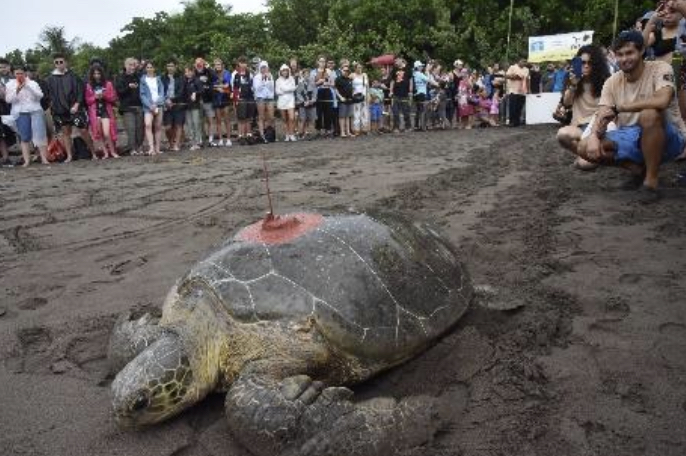
A green sea turtle returns to the ocean after being satellite-taged byt STC. Photo credit: Supplied by Sea Turtle Conservancy
RESULTS: Goal #2
STC selected 22 Research Assistants (RAs) to carry out the research, protection, and education activities in Tortuguero in 2022. Of those, 63% were from Latin American countries of origin (Costa Rica, Mexico, Argentina, Peru, Colombia, and Panama). In March 2023, eight of STC’s full- and part-time staff, based in Costa Rica and Panama, attended and presented at the International Sea Turtle Symposium in Cartagena, Colombia.
In addition to the oral presentations and posters sharing results of research studies from our monitoring programs, STC’s Scientific Director Roldan Valverde presented the results of our newly published paper, titled Recent decline of the green turtle (Chelonia mydas) nesting trend at Tortuguero, Costa Rica. This presentation was STC’s first effort to alert the international community about this concerning decline.
In 2022, STC’s goal of building conservation capacity in the region was exemplified with Diomedes Palacio, an indigenous Panamanian who served as an RA in Tortuguero during the green turtle nesting season. Before traveling to Tortuguero this year, he worked as a field coordinator at STC’s research station on Soropta Beach, Panama. Diomedes had the unique opportunity to use his knowledge surrounding sea turtle research and protection in Panama and apply it in Tortuguero; likewise, the experience that he gained in Tortuguero will also inform his work on leatherback and hawksbill sea turtles once he returns to Panama.
A highlight of Diomedes’ time in Tortuguero occurred on a night patrol when he had the opportunity to witness green turtle hatchlings for the first time. In Panama, he had only ever seen leatherback and hawksbill sea turtles. By expanding his knowledge on an entirely new sea turtle species, Diomedes will have a well-rounded background if he decides to join or create a sea turtle conservation project in Panama in the future.
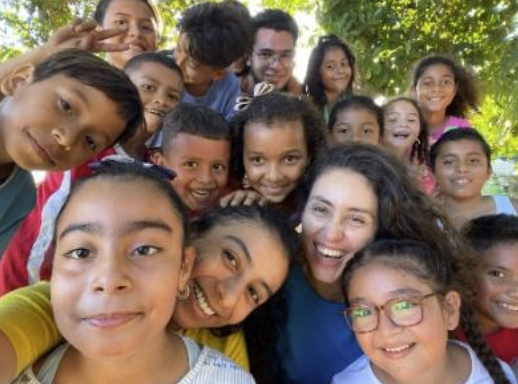
Juliana Di Fillipo, a 2022 Tortuguero RA, poses with children in the community. Photo credit: Supplied by Sea Turtle Conservancy.
RESULTS: Goal #3
STC continued to reduce human impacts on Tortuguero’s sea turtles through the implementation of its annual monitoring program, which was developed to facilitate an accurate evaluation of the impact of different threats and rapidly identifies trends so appropriate measures can be taken. Last year, 202 green turtle nests were predated by domestic dogs, raccoons, armadillos, or opossums, representing a decrease in predation from previous years. STC hosted two spay and neuter events in the community in 2022, which sterilized 41 dogs, helping to curb the issue of dog predation on sea turtle nests.
In partnership with the local NGO Coastal Jaguar Conservation, STC also tracked the level of predation by jaguars in 2022, which was similar to last year’s numbers. One hundred green turtles, 11 leatherbacks, and three hawksbills were killed by jaguars in 2022 within the National Park.
STC also worked with the local police force and National Park staff to carry out prevention and protection operations during the 2022 nesting season. Local authorities and representatives from the National Park were able to find and confiscate around 500 stolen eggs from illegal hunters. Law enforcement returned the eggs to STC staff who then re-buried them on the beach, providing an opportunity for them to incubate and hatch. Although re-burying eggs can negatively impact hatching and emergence success, STC has recorded around a 50% emergence success rate for recovered eggs.
The 2022 nesting season marked the first full nesting season where long-wavelength, turtle-friendly fixtures were in place in the community. In August, two members of STC’s lighting team traveled to Tortuguero and used a spectrometer, a device that measures the wavelength output of artificial lights, to confirm that the streetlights were true amber, long-wavelength LEDs. Throughout the season, STC witnessed an overall decrease in disoriented hatchlings and adult turtles, which can be attributed to the replacement of the lights and education efforts by STC’s RAs and Junior RAs. The national utility company, ICE, has pledged to replace all its lighting in Costa Rica with the wildlife-friendly alternative.
RESULTS: Goal #4
In 2022, STC educated and involved an estimated 350 students and adults within the community through various presentations and events. STC hosted weekly activities at the Barra Tortuguero School for middle school children that focused on eight modules surrounding the marine ecosystem. STC also visited a community park every Saturday to host sea turtle-related activities for children, which included painting, memory games, face painting, and a short walk to STC’s visitor center museum.
Throughout the year, more and more children attended the weekly event as they learned of STC’s consistent presence. Based on feedback from RAs, many children in Tortuguero do not receive much attention from their parents or relatives. Through this program, STC was able to provide a welcoming, safe space for Tortuguero’s children while inspiring stewardship for the area’s sea turtles and their habitats.
STC hosted ten beach clean ups in 2022, many of which were carried out in conjunction with the Tortuguero Environmental Committee, hotels and lodges, and a school from San Jose. A total of 180 people participated in beach clean ups throughout the year.
STC also recorded more than 10,000 tourists who visited our Visitor’s Center in 2022, which was much higher than what we have observed in the last two years. Visitation is slowly returning to pre-pandemic levels. Lastly, 18 local children aged 11-17 participated in the Junior RA program. These children assisted the RAs with carrying out the monitoring protocol while also educating the community about problematic lighting, assisting with the Tour de Turtles program, and promoting the Eco-Labeling program for local businesses.
Community Feedback
STC created a video featuring Ivan Ramos, a Tortuguero community member who has served as STC’s turtle track surveyor in Tortuguero for the last 14 years. Once per week, he walks the entire 29 km of Tortuguero beach to record all the recent turtle tracks and nests. The video can be viewed here: https://vimeo.com/812969631.
What's next?
The work at Tortuguero represents a long-term commitment by STC to monitor and protect this critical nesting beach in partnership with the local community. We foresee the program continuing indefinitely as we continue to protect and recover this globally important population of green turtles.
Tortuguero, Costa Rica, is a world-renowned destination for ecotourism and turtle-watching. STC operates a fully-functioning biological field station that regularly hosts up to 25 people. We would be happy to host World Nomads staff or clients on a visit to Tortuguero to observe and participate in the turtle research program.
Traveling soon? When you buy travel insurance with us, you can make a contribution towards a cause you care about.
Get a quote